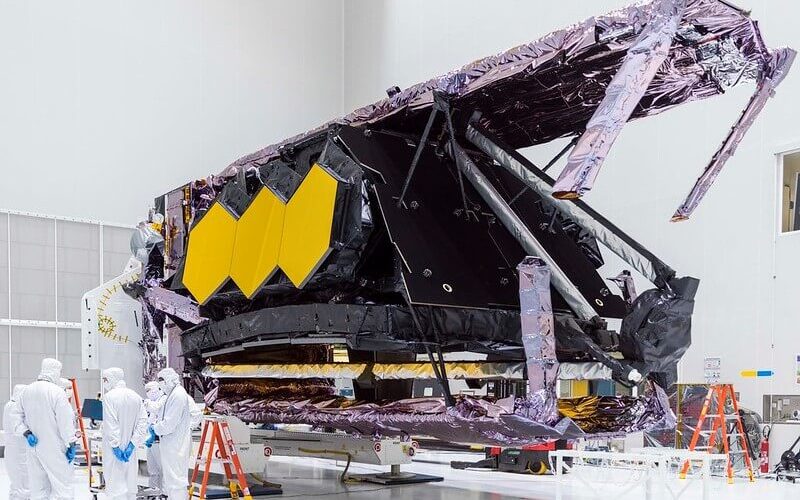NASA has delayed the launch of the James Webb space telescope after an incident during launch preparations meant further testing was required.
NASA said the launch readiness date will now be no earlier than December 22, 2021. It was previously scheduled to launch on December 18, 2021 on an Arianespace Ariane 5 rocket from Kourou, French Guiana.
Technicians at the satellite preparation facility in Kourou were preparing to attach Webb to the launch vehicle adapter when the incident happened.
“A sudden, unplanned release of a clamp band – which secures Webb to the launch vehicle adapter – caused a vibration throughout the observatory,” NASA detailed in a statement on November 22, 2021.
NASA is investigating the incident and carrying out additional testing to check that the problem did not damage any components.
“NASA and its mission partners will provide an update when the testing is completed at the end of this week,” the agency said.
The Webb telescope is the successor to the Hubble telescope and is a joint project between NASA and its European and Canadian counterparts ESA and CSA.
“Webb will solve mysteries in our solar system, look beyond to distant worlds around other stars, and probe the mysterious structures and origins of our universe and our place in it,” according to NASA.
However, the project has been beset by delays and cost overruns. Most recently, a planned 2020 launch date was delayed due to the COVID-19 pandemic.
NASA says Webb, its largest and most powerful science telescope ever constructed, will look into the epoch when the first stars and galaxies formed, over 13.5 billion years ago. Its primary mirror is 21.3 feet across (6.5 meters) and consists of 18 gold-plated hexagonal segments. The telescope’s sunshield is the size of a tennis court.
After launching from French Guiana, Webb will travel to an orbit about one million miles away from Earth. It will take six months to fully commission, including processes such as unfolding its mirrors, sunshield and other alignments and calibrations.

